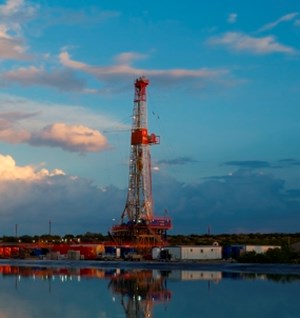WO oilfield electrification: Alliance’s Modglin sees power demand rising as Texas production grows
(WO) — Texas oil and gas production will continue to recover and grow during 2023, and use of oilfield electrification will expand with it. That was the takeaway message from Texas Alliance of Energy Producers President Jason Modglin, who delivered the keynote address Tuesday morning during Day 1 of World Oil’s Oilfield Electrification Technology Conference.
Outlook for oilfield electrification. Speaking to attendees at the Omni Riverway Hotel in Houston, Modglin said the leader in expanding oilfield electrification in Texas will be the Permian region and cited evidence from a 2019 IHS Markit/Oncor study that is being updated. “The study predicted a doubling of power demand in the Permian basin,” explained Modglin, “from just under 5,200 MW at the 2019 peak to nearly 10,200 MW at the peak in 2030.” Furthermore, he added, the main driver for this growth is greater activity in the region’s Delaware basin.
Primary uses for expanded field electrification in the Permian, according to the study, include drilling and completion; camp power; artificial lift; tank batteries and separators; and saltwater disposal wells. Additional factors that have emerged since the original study include weatherization; expanded water recycling; and new technology to remove utilization of diesel generators.
Working back to full production. Meanwhile, Modglin updated the audience on efforts in Texas to return statewide oil production to the pre-Covid record of 5.45 MMbpd, achieved in March 2020. “Texas has done a phenomenal job, but we’re not quite back to pre-Covid production,” he said. “New Mexico and Utah are the only two states, so far, to get back to pre-Covid production levels.”
Modglin also noted that the Texas Petro Index (a measure of Texas E&P health) compiled by Alliance Executive Vice President/Petroleum Economist Karr Ingham stands at 174.6, its highest level since late 2018/early 2019. In addition, he said that Texas drilling permits issued during 2022 are approaching the level of 2019, another sign of continuing recovery.
Methane regulation. Directed by the Biden administration, the U.S. EPA is working on new methane regulations for oil and gas. “The EPA’s proposed methane rules are far more expansive than anticipated,” said Modglin. “EPA has taken a really expansive attitude toward methane.” Indeed, there are three main portions of the oil and gas industry that would be covered. One of these is titled “Production & Processing,” and it covers onshore wellsites, storage tank batteries, gathering and boosting compressor stations, and natural gas processing plants. “Under this section, inactive and abandoned wells will have to be monitored regularly,” said Modglin.
A second portion is titled “Natural Gas Transmission & Storage.” It covers equipment and processes at compressor stations and storage tank batteries. The third portion is titled “Distribution,” and this grouping has not been covered by previous EPA rules. Included are distribution mains/services, city gate, and regulators and meters for customers. “The rules and regulations coming on this (distribution portion) are really alarming,” commented Modglin.
On the subject of CO2 emissions, the U.S. continues to lead the world in CO2 reductions, noted Modglin, and it has been the leader since 2005. Ironically, the Intergovernmental Panel on Climate Change, along with the IEA and U.S. EIA, agrees that this trend can largely be attributed to increased natural gas usage, made possible by fracing.



